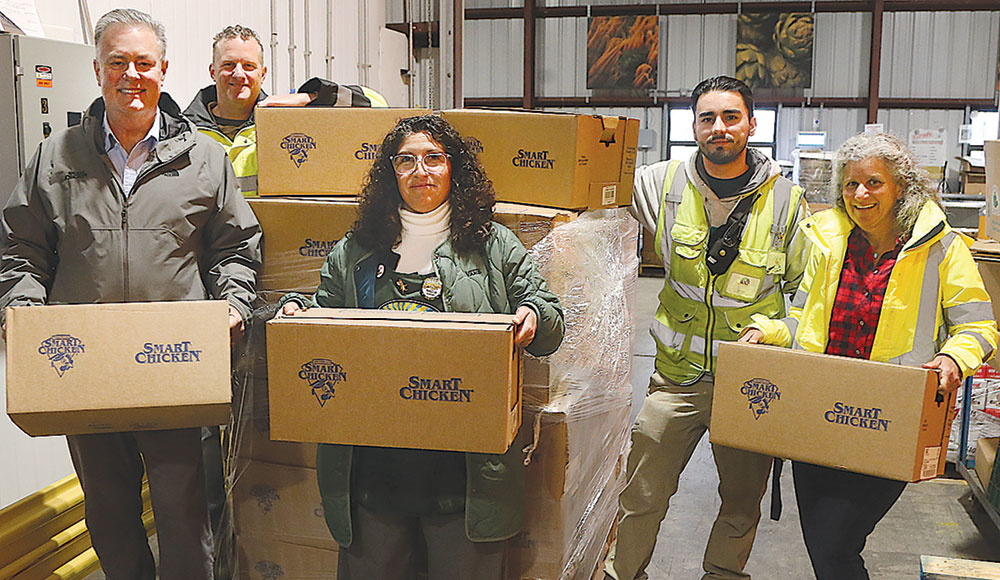The Second Harvest Food Bank of Santa Cruz is facing major problems serving its clientele after getting hit with cuts by the Trump Administration, according to CEO Erica Padilla-Chavez.
“We actually got four cancellations in one week that amounted to over $250,000 of food that didn’t come in,” she said. “It was milk, it was pork chops, it was cheese. It’s basic, essential nutrients that our community needs.” The food bank was not prepared for these cancellations and its budget didn’t account for such a profound loss of food.
Earlier this month, Elon Musk’s Department of Government Efficiency (DOGE) team slashed the budget of the U.S. Department of Agriculture (USDA). On DOGE’s Agency Efficiency Leaderboard, the USDA is ranked as one of the top agencies from which DOGE has recovered the most savings. However, much of this money is being recovered at the expense of the food banks.
Second Harvest helps feed 65,000 people each month, according to its website, including children, seniors, veterans, homeless and working poor people, whose jobs don’t pay enough to support their families.
The Emergency Food Assistance Program (TEFAP) had allocated $500 million in 2025 for food banks nationwide, with $50 million for California. Padilla-Chavez said TEFAP “was essentially canceled” and immediately affected the delivery of food to Second Harvest.
Second Harvest has also experienced a reduction in food distribution under the Local Food Purchase Assistance Cooperative Agreement Program, or the LFPA, which was established by the Biden Administration in 2021. The program enabled food banks to buy food from local farmers.
Lack of funding has stalled 177,000 pounds of TEFAP-funded food orders for Second Harvest, which accounts for $348,728 worth of expected food deliveries, with no clarity on when or if supplies will resume.
As of July 1, all funding and food flow allowed by the LFPA will end, causing a blow of about $700,000 for Second Harvest.
The USDA also recently cut the Local Food for School Cooperation Agreement Program (LFS), which allocated funds for schools across the nation to buy food from local farmers. The Agriculture Department had initially pledged over $1 billion for the LFS and LFPA for the year 2025 but all of that funding was canceled this month, creating tremendous difficulty for communities across the U.S. to feed their residents.
“When you see a shutting down of other food programs, your food banks become the hub for the food and meals that are now not available through those other channels,” she said. She anticipated an overwhelming demand on food banks if food support programs continue to be axed.
Padilla-Chavez said she had just returned from a meeting in Los Angeles with other CEOs of food banks across California. “We’re all in the same boat,” she said.
To combat the loss of funding, she said Second Harvest is launching a “Bridging the Gap” campaign, which calls for increased community support. “We’re going to ask our community members—all community members—to help us bridge the gap by giving us $1, by giving us $100, by giving us $1,000—whatever people can give to ensure that we have the resources.”
Although money is important, she said that people can also help by volunteering at the food bank. Second Harvest is working to evaluate and maximize its efficiencies and ensure that it’s using resources to buy “as much food as possible.”
At the moment, Padilla-Chavez is unsure what other funding sources might be available. She said that Second Harvest has an immediate challenge to keep its shelves stocked and currently needs community support to do that. Pointing to the roots of Second Harvest, she said, “Historically, food banking has been entirely a community effort. It was 100% a community endeavor in the beginning.”
Despite the losses, Padilla-Chavez said she’s confident the food bank will overcome the challenges.
“Your food bank is still committed to serving our community,” she said. “Just help us out, just like you have been for so long.”













